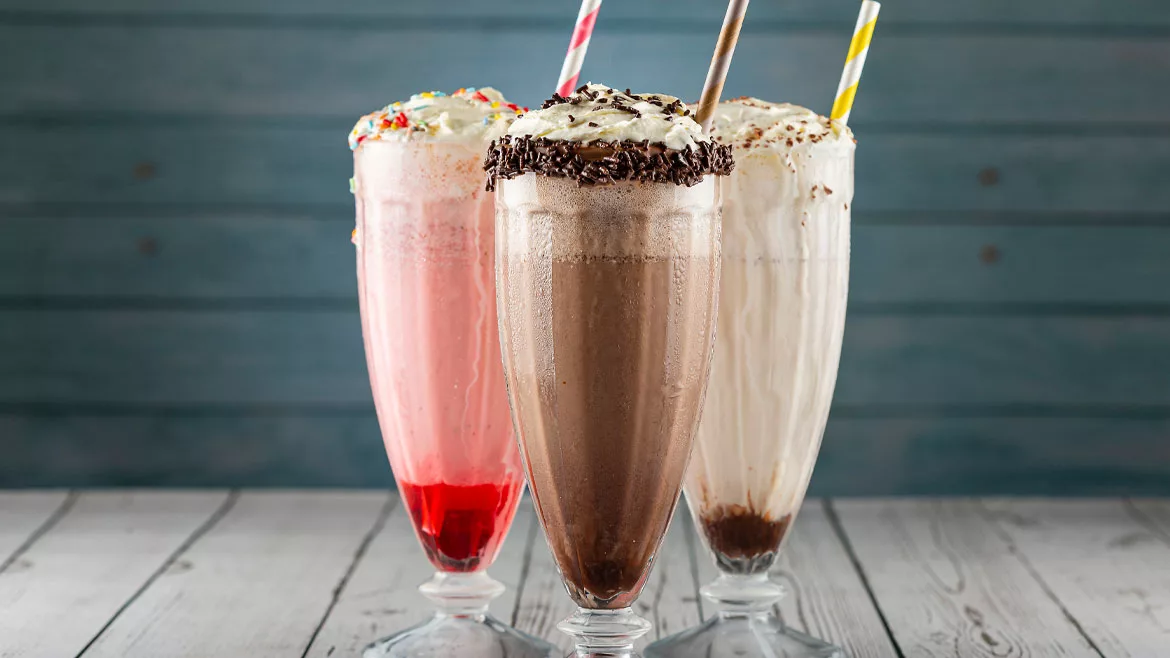Natural and organic retailers forecast future success
As consumers continue to think about the quality of the food and beverages they consume and gain more curiosity about where their food comes from, they often turn toward natural and organic channels to find brands with the health and ecological benefits they crave.
Natural and organic products make up 3 to 3.5 percent of total food and beverage sales, with beverages making up approximately 12 percent of that amount, says Eben Jose, industry research analyst at IBISWorld, Santa Monica, Calif. “[Organic products] provide a new revenue stream for supermarkets, which is a relatively saturated market because groceries are such a necessity item,” he says. In addition, because prices of natural and organic items are usually higher than other products, they increase market revenue as well, he adds.
Retail sales of natural and organic products totaled $47.6 billion in 2011, up from $38.6 billion in 2010, and are projected to increase to $78.4 billion by 2015, a growth rate of 13 percent compounded annually, according to a 2012 report by Boston-based Capstone Partners LLC titled “Natural & Organic Products.” SPINS LLC, Schaumburg, Ill., also reported that products in the natural category showed the highest increase in food and beverage dollar sales at 14.8 percent for the four weeks ending July 7 compared to sales for conventional food (a 12.6 percent increase) and specialty gourmet food (a 9.2 percent increase), while organic beverage sales showed little to no changes compared to last year.
Mambo Sprouts Marketing, Collingswood, N.J., reported in its 2012 Mambo Sprouts Marketing Health and Natural Consumer Outlook Study that 99 percent of health and eco-product consumers choose organic products. In addition, 60 percent of these consumers believe it is important to buy natural and organic beverages, and 13 percent believe it is important to buy natural and organic beers and wines, it reports. Furthermore,
56 percent want to see more shelf-stable, non-dairy, non-genetically modified beverages on the shelves. Sixty-four percent of health and eco-product consumers plan to increase spending on organic products in 2012 compared with 2011, the study adds.
Sharing the limelight
Of course, not all sales of natural and organic products are coming exclusively from natural and organic retailers; supermarkets and mass merchandisers are stocking organic items as well because organic food sales are outpacing the total grocery category, according to the Capstone Partners report. In fact, approximately 82 percent of all food retailers sell natural and organic products, and the majority of total natural and organic food and beverage sales are made through traditional retailers and mass merchandisers, the report states.
“Companies like Target and Walmart already have such large customer bases, and they provide that all-in-one stop-and-shop for people,” IBISWorld’s Jose says. “So it’s natural that if they bring in organic foods, people are going to choose to purchase them there rather than go to a smaller retailer where prices are probably going to be higher as well.”
Whole Foods Market is among the exceptions to traditional stores and mass merchandisers’ growing domination of organic sales. In its third-quarter financial report for 2012, Whole Foods Market Inc., Austin, Texas, posted a 14 percent increase in sales for the 12 weeks ending July 1, totaling $2.7 billion.
“In an economic environment that is proving to be difficult for many retailers, we are thriving and pleased to report another quarter of strong growth and excellent results for our stakeholders,” said Walter Robb, co-chief executive officer of Whole Foods Market, in a statement.
Other natural and organic retailers also have an upper hand in terms of product offerings. Most traditional retailers and mass merchandisers limit their organic products to an aisle or small section, while natural and organic retailers have a much wider range of options and niche product availability, IBISWorld’s Jose notes.
Plus, natural and organic retailers offer a different shopping environment for the consumer. “It’s more focused on customer service [and] far less focused on price,” says Jeff Weidauer, vice president of marketing and strategy at Vestcom International Inc., a retail solutions company based in Little Rock, Ark.
Because customers visit natural and organic retailers expecting quality products, they’re willing to pay a little bit more to get them, he notes. “The natural and organic food stores should be focused more on building a relationship with the shoppers that they already have, keeping them coming back and helping them learn more because they are a shopper that wants to get better information about the foods they are buying.”
Educating the consumer
A May 2012 study by Harris Interactive on behalf of CouponCabin, Whiting, Ind., found that there is a need to educate consumers about natural and organic products. It reported that 8 percent of American consumers don’t know what organic food items are, 38 percent don’t understand their purpose, 31 percent aren’t sure if natural and organic foods are better than non-organic foods, and 45 percent of consumers do not seek out organic items.
Everyone has their own definition of what is natural and organic, Vestcom’s Weidauer says. “There’s just a lot of confusion in the marketplace … [and] there’s a lot of confusion in total about what is healthy,” he says.
Consumers who do not understand the benefits of natural and organic products also tend not to buy these products. Because organic food items tend to be more expensive than products that are not considered natural or organic, consumers tend to choose the less expensive option, Weidauer says.
In order to continue to grow, natural and organic retailers need to decide that they want to educate consumers about the benefits of natural products and then do it, he says. “The challenge there is that what constitutes as healthful eating is a very broad spectrum, so, for the most part, shoppers are doing a lot more research; they’re trying to get their own information, [but] they tend to be a little bit cynical about the information that is printed on the package.”
The desire for more information is already available and waiting for retailers to jump on it, he says. Weidauer suggests that natural and organic retailers use online programs and social media to reach out to consumers because many shoppers do pre-shopping research online or via their mobile phones to check prices, read product reviews and gather other information to inform their purchase decisions.
Once consumers are in the store, it presents more opportunities to educate the consumer. Vestcom offers an in-store marketing solution known as Healthy Aisles, which is an easy-to-understand program, Weidauer says. As part of the program, shelf labels are placed under store products noting which items are heart-healthy, low-sodium, good sources of fiber or healthy carbohydrates, or have various other nutritional attributes. Such programs can help consumers see the benefits of the products they’re buying.
Organic cocktails hit the shelves
Informational labels are not the only new features on store shelves. Organic Mixology (OM) Spirits, Los Angeles, recently launched a U.S. Department of Agriculture (USDA) certified organic cocktail.
“OM’s creators wanted to make an organic alcoholic beverage for a few reasons,” says Jason Monkarsh, chief executive officer of OM Spirits. “One, they themselves are concerned with the types of ingredients that they put into their bodies through the foods they eat and realized that the same concern should apply to what you’re drinking.” The creators also drew on current mixology trends centered on using fresh ingredients, he says.
After a three-year process from creation to USDA approval to launch, OM’s Wild Cranberry Blood Orange blend hit the market. Joining the ranks of organic gins, vodkas, wines and beers already on store shelves, the
high-quality, pre-mixed cocktails contain American-grown organic grains, 100 percent natural flavors, organic agave nectar, fruit and vegetable juices, and non-genetically modified organic caramel for color.
“Every ingredient in our product comes under intense scrutiny — they go as far as looking at what types of fertilizers were used on the farms that grew the grains that made the vodka,” Monkarsh says. “It’s a pretty intense process, and they don’t let anyone slide by.”
In keeping with the organic trend, even the product’s packaging is environmentally friendly. The cocktails are packaged in a 100 percent recyclable, light-weight glass bottle and wrapped in a label produced in a wind-powered printing facility that uses non-toxic, water-based inks, all housed in shipping crates made of 75 percent post-consumer recycled content, Monkarsh says.
“We’re also trying to encourage consumers to reuse our bottles for olive oils, vinegar, as a vase or any other ideas they want to come up with,” Monkarsh says. OM Cocktails also partnered with Trees for the Future, promising to plant a tree for every bottle of OM Cocktails sold.
The cocktails currently are available in the California market and plan to expand sales to the Florida market and add new flavors to its lineup in the near future.
Positioned for growth
As the economy strengthens, disposable income increases, interest in health and wellness increases, and new, healthy products draw consumers to the stores, experts expect to see growth in the natural and organic channel.
“General demand is definitely growing for the product,” IBISWorld’s Jose says. With mass merchandisers adding natural and organic products to their shelves, farmers are going to be expected to find ways to produce more, and greater production will lower prices, making organic products even more accessible to consumers, he notes.
Greater product accessibility creates new opportunities for more consumer interest. “Millennials, as they start to have families, will be very interested in how to feed them and in feeding them different things than what they grew up on possibly,” Vestcom’s Weidauer predicts. “They’re going to be more open to shopping in other environments beyond the typical supermarket.”
In fact, future expectations for success in the natural and organic retail channel have enticed investors. In April, private equity firm Oak Hill Capital Partners, New York, acquired an 80 percent interest in Earth Fare, a Fletcher, N.C.-based retailer with 25 stores across the Southeast and Midwest.
“Earth Fare is well-positioned for expansion given robust consumer demand for natural and organic food, widespread interest in environmental sustainability and significant market opportunity across the United States,” said Oak Hill partner Tyler Wolfram in a statement.
The outlook is bright for natural and organic retailers, and experts expect that consumers will continue to learn about the benefits of organic foods and beverages and seek products that offer the healthy attributes they crave. BI
Looking for a reprint of this article?
From high-res PDFs to custom plaques, order your copy today!




